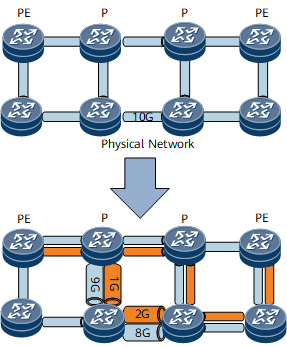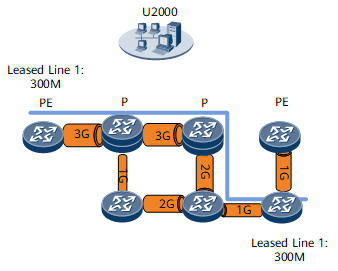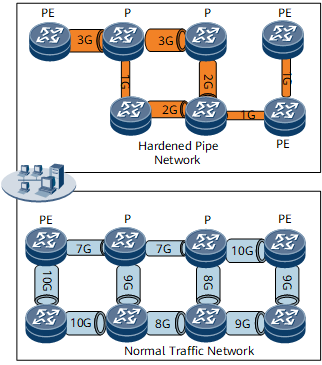Centralized Management of IP Hard-Pipe-based Leased Line Services on the NMS
In the IP hard pipe solution, the NMS centrally manages bandwidth resources and implements service provisioning. Hard pipe service provisioning involves two steps:
- Establish a hard pipe plane.Figure 1 IP hard pipe topology establishment 1

In the physical network topology, select the public network links that require hard pipe deployment and set the hard pipe bandwidth for each link. The hard pipe topology is then established. On the network shown in Figure 2, after hard pipes are classified on the entire network, the original network is divided into two logical networks: a hard pipe network and a normal service network (called a soft pipe network).
- Service provisioning
The service bandwidth, source and destination devices, and service IDs are manually configured for VIP customers. The intermediate path can be configured or automatically calculated by the NMS.
The NMS checks the hard pipe bandwidth on each node to see if the bandwidth is adequate for service provisioning. If not, the NMS stops service provisioning and informs users of it.
The NMS delivers configurations to devices.
After service provisioning succeeds, the NMS updates the bandwidth resource database.
Figure 3 IP hard pipe service provisioning
